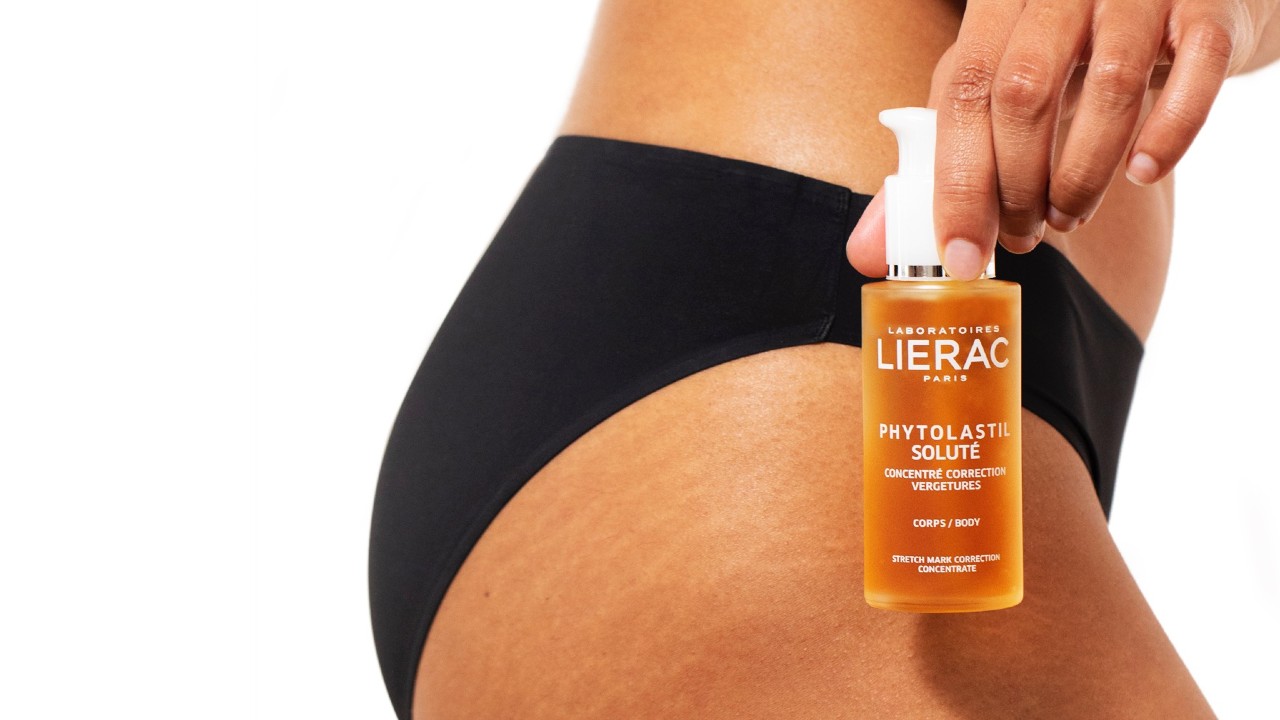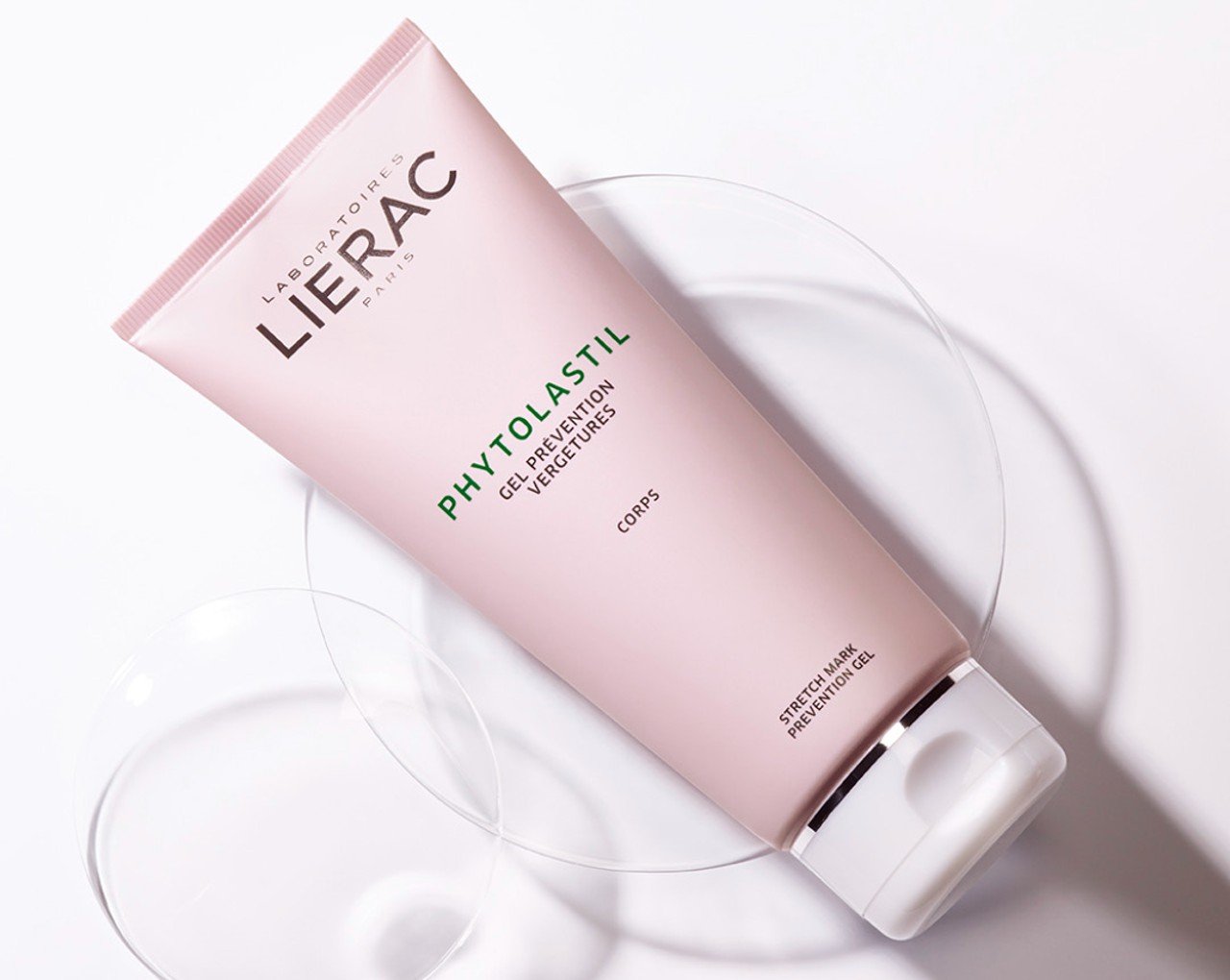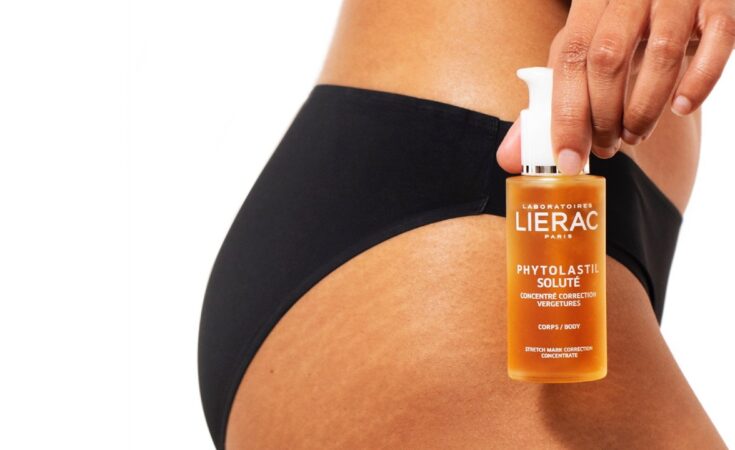Why stretch marks form and how Lierac Paris Laboratories’ Phytolastil can prevent and heal your stretch marks—even years later

Your body does some heroic things during pregnancy, but you may not want to wear your battle scars for years to come.
If you developed stretch marks during pregnancy, you are not alone. It’s estimated that up to 90 per cent of women get stretch marks—indented streaks in the skin— during pregnancy. While it might seem that they’re simply a result of your skin stretching to make room for the baby, it’s a bit more complicated than that.
“Cortisol increases during pregnancy and affects the suppleness and elasticity of the skin,” says Elisabeth Gagnon, national trainer for Lierac Paris Laboratories. Because of this, fibroblasts, which are cells that produce collagen and elastin fibres, become imbalanced. As a result, the skin becomes thinner and isn’t as resilient during pregnancy. The stretching of skin that inevitably occurs during pregnancy can result in cracks or tears in its deep layers. This can also happen during puberty or when weight increases or decreases. These indented marks look red or purple at first, when they are newly inflamed and trying to heal. Over time, they turn silver or white, as they settle into a more permanent scar.
Stretch marks aren’t harmful and may fade over time, but many women don’t like the way they look and want a better solution. Enter Lierac Paris Laboratories Phytolastil. The product collection comes in two formulations that help reduce the effects of stretch marks: Phytolastil Stretch Mark Prevention Gel and Phytolastil Stretch Mark Correction Solute.

First developed in 1975 as a solution for the founder’s wife’s stretch marks, the Phytolastil stretch mark products are made of 97 per cent natural ingredients, including ivy, alchemilla and horsetail. Well-known by French Women since its creation, Phytolastil is the most recommended stretch marks treatment by beauty advisors in Canada’s drugstores.
Phytolastil Stretch Mark Prevention Gel is safe during pregnancy and easy to use. Start as soon as you notice your body changing—around the third month—and apply twice a day to the areas of the body that are at risk of stretch marks, such as your belly, breasts, hips and buttocks. You’ll be glad that you did: In a study of 48 pregnant women, Phytolastil Stretch Mark Prevention Gel prevented the appearance of stretch marks in 80 percent of cases. After birth, you can switch to the Phytolastil Stretch Mark Correction Solute and apply for eight to 12 weeks after pregnancy to maximize results.
If you have stretch marks from puberty or a previous pregnancy, you’re by no means out of luck. The Phytolastil Stretch Mark Correction Solute can make stretch marks two times less visible after two months of use. They won’t go away altogether, but the discolouration, depth, width and length of the stretch marks can all be reduced. “Phytolastil prevents or corrects, it will take care of any stretch mark, old or new,” says Gagnon.
Like the Prevention Gel, it’s important to apply the Correction Solute consistently twice a day. You may notice your stretch marks become red: Don’t be alarmed by this. It means they are becoming inflamed again, on their way to healing. Once they’ve changed in appearance, this change is permanent—you don’t need to keep using the product.
Even though they’re common, stretch marks can significantly affect a woman’s self-esteem. If you don’t like your stretch marks—or want to reduce the chances of having lasting marks—adding Phytolastil to your skincare routine is a simple and effective solution.
Don’t miss Lierac Paris Laboratories’ other skincare solutions for young and future moms, like the Bust-Lift Expert Recontouring Cream and Body-Slim Firming Concentrate.
Stay in touch
Subscribe to Today’s Parent’s daily newsletter for our best parenting news, tips, essays and recipes.



































